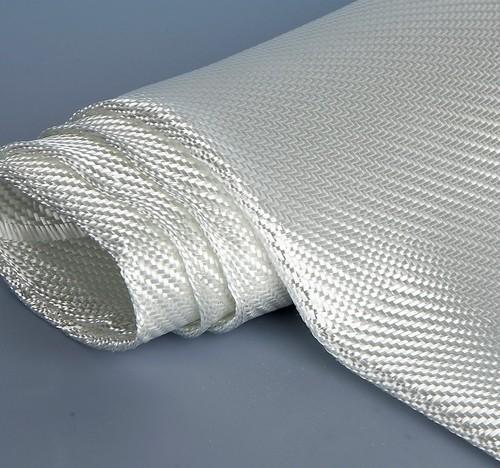
CARBON FIBER

GLASS FIBER




The glass fiber is a material formed by very thin filaments of glass agglomerated with resins that give place to a strong perfect structure, when they are interlaced, to be used as structural reinforcement of other materials.
Chemical resistance: the resin is a component of the glass fiber that makes her resistant to the chemical and environmental erosion. Therefore, the glass fiber neither rots nor deteriorates, since it is resistant to the majority of the acids (except the hydrofluoric acid and the phosphoric acid)
Light weight: the specific weight of materials composed by glass fiber allows them to be very easy to move and install. In addition, they reduce the weight supported by the structures of support.
Low maintenance: thanks to the intrinsic characteristics of the glass fiber, the compounds do not need any special maintenance after many years of use in external applications. This characteristic drives automatically to savings costs.
Electrical isolation: The glass fiber does not lead the electricity, for what it is ideal for applications where there is looked the electrical isolation of certain facilities.
Versatility: It is a very versatile product: wide range of filaments, sizes, types of fiber, etc. These characteristics do that the glass fiber offers a great range of industrial possibilities.
Excellent thermal isolation: The glass fiber has a low coefficient of thermal expansion and relatively high thermal conductivity. This make it remove the heat in a very fast way and is perfect to use it like thermal insulation. Therefore, it is ideal for facilities in the exterior, since we will not have to worry that deteriorates for being exposed to the sun for a long time.
Economic. The glass fiber is a material with a great economic advantage compared to other fabrics of synthetic and natural fibers.
Kevlar is a super strong plastic. The properties of Kevlar are partly due to its internal structure (its molecules are arranged in regular and parallel lines) and partly due to the form in which it transforms in fibers that are joined in a narrow form. It is a synthetic material (made in the laboratory, not extracted from the nature) patented, made only by the chemical company DuPont ™ and it comes in two principal varieties called Kevlar 29 and Kevlar 49 (other varieties are done for special applications). Chemically it is a synthetic polymer of aromatic polyamide. A polymer is done of identical molecules linked to each other. Kevlar's monomers are based on a ring modified structure similar to the benzene.
It is strong but relatively light.
The specific traction resistance of Kevlar 29 and Kevlar 49 is more of eight times major that than the wire of steel.
Unlike the majority of the plastic ones, it does not melt: it is reasonably good to resist temperatures and it separates into its elements only approximately 450 ° C.
The Kevlar can resist the assaults of many chemical different products, but the prolonged exhibition to acids or strong bases will degrade it with the time. In the tests, Kevlar was kept almost without changes after the exhibition to the warm water
It is necessary to indicate that the Kevlar has some disadvantages. Especially, it has a very high resistance to the traction but its resistance to the compression is very low. It is because of it that the Kevlar does not use instead of steel as material of principal construction in constructions as buildings, bridges and other structures where the forces of compression are common.
Kevlar can be used only or like part of a compound material (a material combined with others) to give more force. The fibers woven of the polymer are molecules extremely difficult to separate: it is necessary energy to separate them. A bullet will be losing energy while way tries to be opened. If it manages to penetrate the material, it slows down of considerable form doing much less damage. So it is an excellent antiballistic material.
Carbon fiber is composed of carbon atoms bonded together to form a long chain. The fibers are extremely stiff, strong, and light, and are used in many processes to create excellent building materials. The properties of a carbon fiber part are close to that of steel and the weight is close to that of plastic.
Carbon Fiber has High Strength to Weight Ratio (also known as specific strength):Strength of a material is the force per unit area at failure, divided by its density. Any material that is strong and light has a favourable Strength/weight ratio. Materials such as Aluminium, titanium, magnesium, Carbon and glass fiber, high strength steel alloys all have good strength to weight ratios.
Carbon Fiber is very rigid: rigidity or stiffness of a material is measured by its Young Modulus and measures how much a material deflects under stress. Carbon fiber reinforced plastic is over 4 times stiffer than Glass reinforced plastic.
Carbon fiber is Corrosion Resistant and Chemically Stable: Although carbon fiber themselves do not deteriorate, Epoxy is sensitive to sunlight and needs to be protected. Other matrices (whatever the carbon fiber is imbedded in) might also be reactive.
Carbon fiber is Electrically Conductive: this feature can be useful and be a nuisance. In Boat building it has to be taken into account just as Aluminium conductivity comes into play. Carbon fiber conductivity can facilitate Galvanic Corrosion in fittings. Careful installation can reduce this problem
Fatigue Resistance is good: resistance to Fatigue in Carbon Fiber Composites is good. However when carbon fiber fails it usually fails catastrophically without much to announce its imminent break. Damage in tensile fatigue is seen as reduction in stiffness with larger numbers of stress cycles, (unless the temperature is high) Test have shown that failure is unlikely to be a problem when cyclic stresses coincide with the fiber orientation. Carbon fibber is superior to E glass in fatigue and static strength as well as stiffness.
Carbon Fiber has good Tensile Strength: tensile strength or ultimate strength, is the maximum stress that a material can withstand while being stretched or pulled before necking, or failing. Necking is when the sample cross-section starts to significantly contract. If you take a strip of plastic bag, it will stretch and at one point will start getting narrow. This is necking. It is measured in Force per Unit area. Brittle materials such as carbon fiber does not always fail at the same stress level because of internal flaws. They fail at small strains. Testing involves taking a sample with a fixed cross-section area, and then pulling it gradually increasing the force until the sample changes shape or breaks. Fibers, such as carbon fibers, being only 2/10,000th of an inch in diameter, are made into composites of appropriate shapes in order to test.
Thermal Conductivity of Carbon Fiber: thermal conductivity is the quantity of heat transmitted through a unit thickness, in a direction normal to a surface of unit area, because of a unit temperature gradient, under steady conditions. In other words it’s a measure of how easily heat flows through a material. Because there are many variations on the theme of carbon fiber it is not possible to pinpoint exactly the thermal conductivity. Special types of Carbon Fiber have been specifically designed for high or low thermal conductivity. There are also efforts to enhance this feature.
Low Coefficient of Thermal Expansion: this is a measure of how much a material expands and contracts when the temperature goes up or down. Units are in Inch / inch degree F, as in other tables, the units are not as important as the comparison. In a high enough mast differences in Coefficients of thermal expansion of various materials can slightly modify the rig tensions. Low Coefficient of Thermal expansion makes carbon fiber suitable for applications where small movements can be critical. Telescope and other optical machinery is one such application.
Carbon Fiber is Relatively Expensive: although it offers exceptional advantages of Strength, Rigidity and Weight reduction, cost is a deterrent. Unless the weight advantage is exceptionally important, such as in aeronautics applications or racing, it often is not worth the extra cost. The low maintenance requirement of carbon fiber is a further advantage. It is difficult to quantify cool and fashionable. Carbon fiber has an aura and reputation which makes consumers willing to pay more for the cachet of having it. You might need less of it compared to fiberglass and this might be a saving.
Carbon Fibers are brittle: the layers in the fibers are formed by strong covalent bonds. The sheet-like aggregations readily allow the propagation of cracks. When the fibers bend they fails at very low strain
Looking at the properties in exception of Kevlar that has a low compression resistance, all of the materials seems feasible to create the seat. We decided that the best option was carbon fiber as we saw that the other two materials were recommended as reinforcement materials. We made some extra research in some of the selling companies to know which the most used material was. The conclusion was that the carbon fiber was used in most cases due it is stronger than steel and lighter than aluminium which make it perfect for this type of projects.
The reason why this material fits perfectly in our plan is because we have to achieve the goal of make a seat that it is light so Katharina can be as fast as possible in competition and strong enough to be able to hold Katharina’s weight without any inconvenience.
As we were developing the seat, we realise that the seat needed a stronger material in the base that will be attached to the kayak because the points where it joins are very small and will hold all the weight so we decided that we should look for a really light metal that can help with this problem without improving the weight of the kayak. Magnesium, aluminium and titanium are light metals of significant commercial importance. Their densities of 1.7, 2.7 and 4.5 g/cm3 range from 19 to 56% of the densities of the older structural metals, iron (7.9) and copper (8.9)
We finally decided to go for the aluminium as it was also the most used material in the industry for this aim.
Carbon Foam Epoxy Vacuum Heat Cured: this construction has proved its potential before and has become one of the most popular. It’s extremely resistant and stiff, so it’s excellent both for sprint training and competition.
Carbon/Kevlar Epoxy Vacuum: this construction is thought for river descent, marathon training and sea kayaking. Its main characteristics are stiffness and impact resistance.
Extra Carbon Foam Epoxy Vacuum Heat Cure: high quality construction, prepared for high performance.
Carbon/Kevlar Vacuum Heat Cured: this construction is specific for marathon racing, and its main characteristics are lightness and stiffness. The balance between weight and stiffness gives this construction an outstanding performance in marathon racing.
Solid Composite System: this system was conceived by MAR Kayaks. It allows to produce boats as solid as composites can be using the latest technologies. It has an extreme performance level due to its extreme stiffness